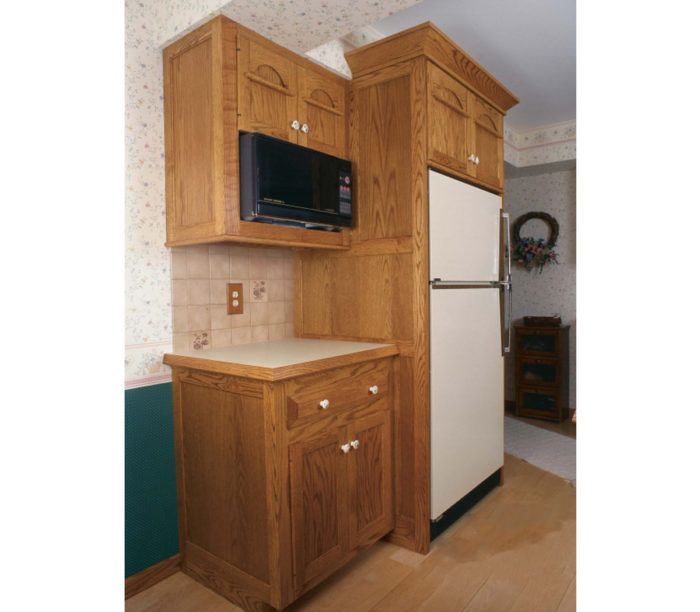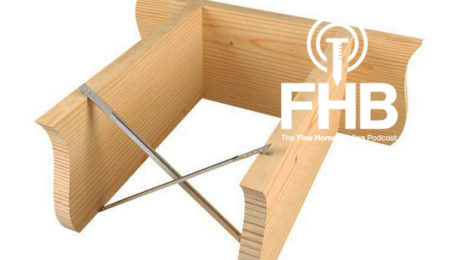Hide That Ugly Refrigerator
If you don't want to spring for a true built-in refrigerator, just build a cabinet around your old icebox.

Synopsis: This short article explains how to build an enclosure for a standard refrigerator that matches the rest of a kitchen’s cabinetry and helps hide most of the refrigerator’s metal surfaces.
A run of handmade kitchen cabinets bumping up against the stark metal surface of a refrigerator makes my skin crawl. That’s why I try to camouflage this homely appliance: To make it more appealing to the eye and more in harmony with the rest of the kitchen, I build it into the cabinetry. It’s a relatively inexpensive way to add charm and sophistication to any kitchen.
Building in gives the kitchen a finished look
Generally, what distinguishes an ordinary built-in refrigerator from a true built-in, such as a Sub-Zero, is the depth of the unit from front to back. Conventional refrigerators are 32 in. deep. True built-ins vary in depth from 23-1⁄2 in. to 25-3⁄8 in., a real plus in a small kitchen where the appliance needs to be flush with the cabinetry.
Because many of my customers still use conventional refrigerators (normally 32 in. square by 65 in. tall), I developed my own method of building in these appliances. This amounts to side panels and a cabinet above the refrigerator. The side panels run the height of the refrigerator and form the sides of the upper cabinet. If the refrigerator doesn’t come with doors that accept panels, I leave the doors as they come from the factory.
First, notice how the door is hinged
Before building in a conventional refrigerator, I have to decide dimensions, clearances, and the operation of the door in relation to the cabinet. I first look at how the refrigerator door is hinged.
I always size the width of the upper cabinet to coincide with the width of the refrigerator opening. The doors of many units open and stay parallel to the side. With a 3⁄4-in. to 1-in. spacing around the unit, my cabinet can be flush with the door, although the handle will stick out. The newer doors that hold gallon-milk containers open with the thickness of the door extending beyond the side. For these, I hold open the door and set the distance between refrigerator and side panel and the depth of the side panel accordingly. That way, the door can open fully.
Once I’ve established the depth of the refrigerator cabinet, I complete a construction drawing for both the cabinet above the refrigerator and the side panels. I like to keep the clearance around the refrigerator as narrow as possible. So I measure the width of the icebox and add 1-1⁄2 in. to 2 in. to the width of the cabinet that goes on top. Manufacturers recommend a 3⁄4-in. to 1-in. clearance around the sides, top, and back. Newer refrigerators have cooling coils on the bottom, so there’s no need for much ventilation.
For more photos and details, click the View PDF button below:


























